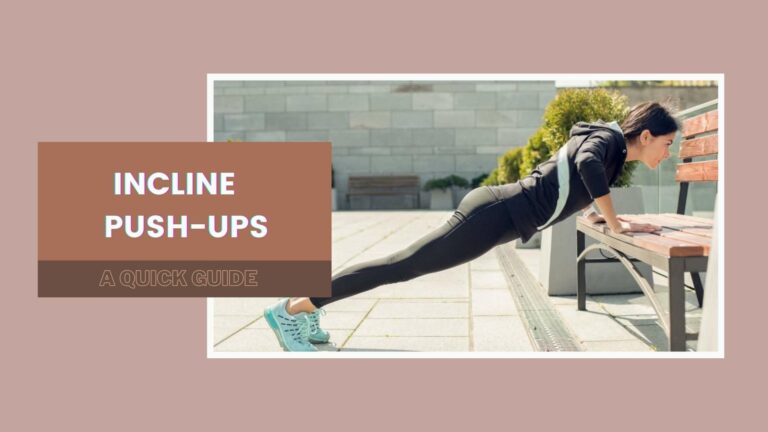Relieving Shoulder Impingement: A Step-by-Step Guide to Effective Exercises

Shoulder impingement, a condition characterized by the pinching or rubbing of the shoulder’s rotator cuff tendons against the acromion (the bony protrusion of the shoulder blade), can be a source of significant discomfort and limited mobility. This common shoulder injury often results from repetitive overhead activities, poor posture, or trauma, and if left untreated, can lead to further complications such as rotator cuff tears or frozen shoulder.
While rest and anti-inflammatory medications can provide temporary relief, incorporating targeted exercises into your routine is crucial for long-term management and recovery from shoulder impingement. These exercises not only alleviate pain and improve range of motion but also strengthen the surrounding muscles, thereby reducing the likelihood of future impingement episodes.
In this article, we’ll guide you through a comprehensive exercise step program designed to address shoulder impingement and promote optimal shoulder health. Remember, it’s always advisable to consult with a healthcare professional, such as a physical therapist or orthopedic specialist, before starting any new exercise routine, especially if you’re experiencing acute pain or discomfort.
Step 1: Pendulum Swing
The pendulum swing is a gentle exercise that can help warm up the shoulder joint and promote mobility. Here’s how to perform it:
Exercise Step:
1. Stand with your feet shoulder-width apart and lean forward from the hips, allowing your affected arm to hang freely toward the ground.
2. Gently swing your arm in a small circular motion, gradually increasing the circle’s size as your shoulder becomes looser.
3. Repeat for 10-15 circles in each direction, maintaining a relaxed arm and avoiding any jerky movements.
Step 2: Shoulder Rolls
Shoulder rolls are an excellent way to increase the range of motion and promote blood flow to the shoulder joint.
Exercise Step:
1. Stand or sit upright with your shoulders relaxed.
2. Gently roll your shoulders forward in a circular motion, making small circles initially and gradually increasing the size.
3. Complete 10-15 rolls in a forward direction.
4. Reverse the motion, rolling your shoulders backward in a circular motion for another 10-15 repetitions.
Step 3: Arm Across Chest Stretch
This stretch targets the posterior deltoid and rotator cuff muscles, helping to alleviate tightness and improve flexibility.
Exercise Step:
1. Stand or sit upright, and bring your affected arm across your chest, keeping your elbow bent.
2. Use your non-affected arm to gently pull the affected arm closer to your body, creating a gentle stretch in the back of your shoulder.
3. Hold the stretch for 20-30 seconds, and repeat 2-3 times.
Step 4: Doorway Stretch
The doorway stretch is an effective exercise for stretching the chest and anterior shoulder muscles, which can become tight and contribute to impingement.
Exercise Step:
1. Stand in a doorway, and place your forearms on the door frame at shoulder height, forming a right angle with your upper arms.
2. Step forward with one leg, feeling a gentle stretch in your chest and shoulders.
3. Hold the stretch for 20-30 seconds, and repeat 2-3 times.
Step 5: Wall Angels
Wall angles are an excellent exercise for strengthening the rotator cuff muscles and improving shoulder mobility.
Exercise Step:
1. Stand with your back against a wall, feet shoulder-width apart, and knees slightly bent.
2. Raise your arms to shoulder height, keeping your elbows and wrists against the wall.
3. Slowly slide your arms up the wall, straightening them overhead while keeping your body in contact with the wall.
4. Hold the overhead position for 2-3 seconds, then slowly lower your arms back to the starting position.
5. Repeat 10-15 times, focusing on smooth, controlled movements.
Step 6: External Rotation with Resistance Band
This exercise targets the external rotators of the shoulder, which are often weak in individuals with impingement.
Exercise Step:
1. Secure a resistance band to a sturdy object at shoulder height.
2. Stand with your affected side facing the anchor point, holding the end of the band with your affected arm bent at 90 degrees.
3. Keeping your elbow tucked against your side, rotate your arm outward against the resistance of the band.
4. Slowly return to the starting position, and repeat for 10-15 repetitions.
Step 7: Scapular Squeezes
Scapular squeezes help strengthen the muscles around the shoulder blades, improving posture and reducing the risk of impingement.
Exercise Step:
1. Stand with your arms hanging at your sides, squeezing your shoulder blades together.
2. Hold the squeezed position for 2-3 seconds, then release.
3. Repeat for 10-15 repetitions, focusing on maintaining proper posture throughout the exercise.
Step 8: Seated Rows with Resistance Band
This exercise targets the muscles responsible for retracting and depressing the shoulder blades, promoting better posture and shoulder stability.
Exercise Step:
1. Sit upright on a chair or bench, securing a resistance band around your feet or a stable object in front of you.
2. Hold the ends of the band with your arms extended, maintaining a slight bend in your elbows.
3. Squeeze your shoulder blades together as you pull the band towards your chest, keeping your shoulders down and back.
4. Slowly return to the starting position, and repeat for 10-15 repetitions.
Step 9: Prone Shoulder Extension
This exercise helps strengthen the posterior deltoid and rotator cuff muscles, which are often weak in individuals with shoulder impingement.
Exercise Step:
1. Lie face down on a mat or bench, with your affected arm hanging off the edge and your elbow bent at 90 degrees.
2. Slowly raise your arm upward, keeping your elbow stationary and your shoulder blade stable.
3. Hold the raised position for 2-3 seconds, then slowly lower your arm back to the starting position.
4. Repeat for 10-15 repetitions, focusing on smooth, controlled movements.
Step 10: Foam Rolling and Massage
Incorporating self-massage techniques with a foam roller can help alleviate muscle tightness and promote recovery.
Exercise Step:
1. Position a foam roller on the floor and lie down, placing the roller under your affected shoulder blade.
2. Gently roll back and forth, applying pressure to any tight or tender areas.
3. Spend 2-3 minutes rolling and massaging the area, focusing on releasing tension in the surrounding muscles.
Remember, consistency is key when it comes to managing shoulder impingement. Incorporate these exercises into your daily routine, gradually increasing the intensity and duration as tolerated. Additionally, be mindful of proper form and technique to avoid further injury.
If you experience persistent or worsening pain, seek guidance from a healthcare professional. With patience, dedication, and the right exercise routine, you can overcome shoulder impingement and regain full, pain-free mobility in your shoulders.




